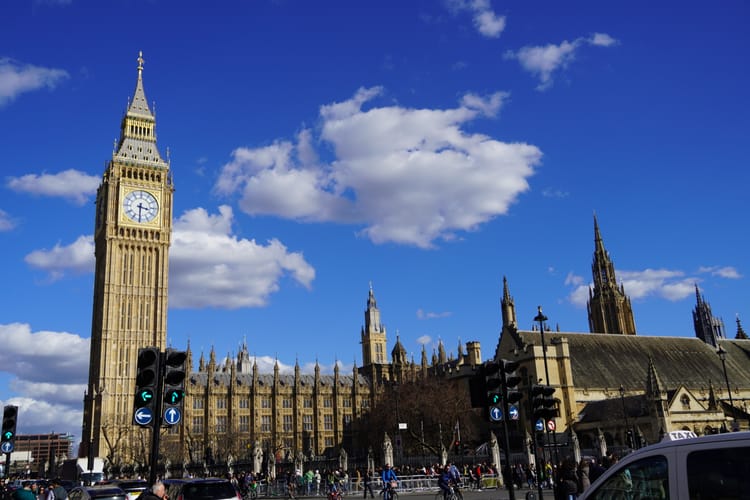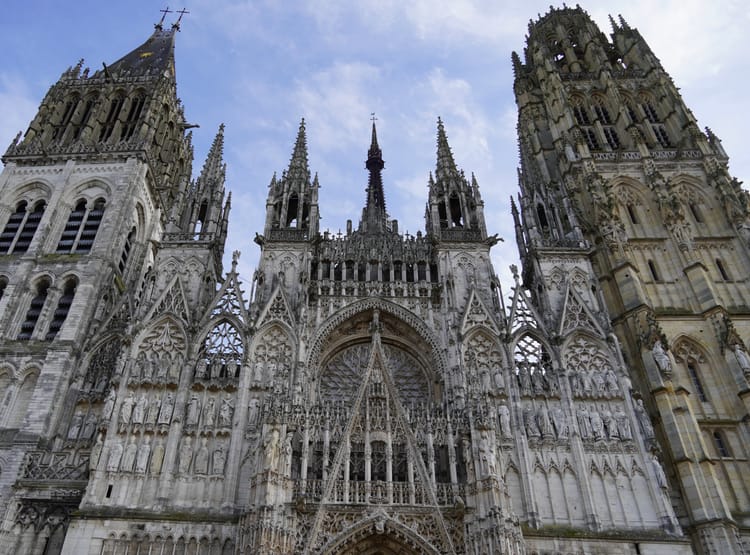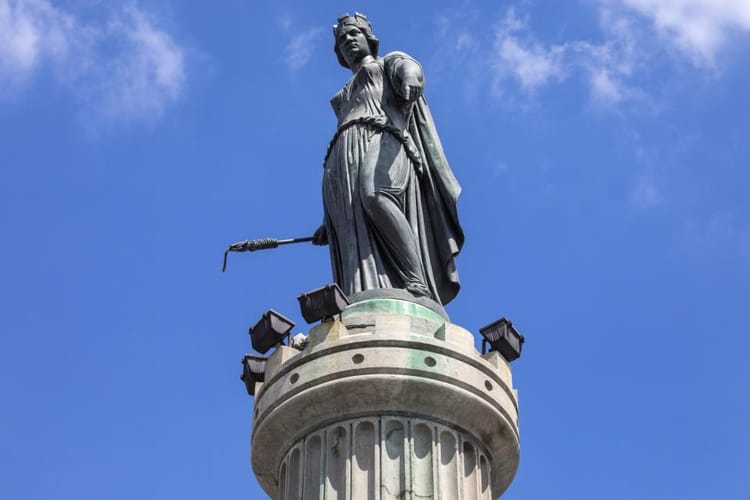Lyon

December 27th - 30th, 2023
Since I had some time off in between Christmas and New Years, and Emily had time off school, we decided to make our first visit to Lyon! Lyon is the nearly 2000 year old capital city of France’s Auvergne-Rhône-Alpes region, was also the "capital of the Gauls" during the Roman times (then called Lugdunum), and is also known to be the gastronomic capital of France. On our trip we toured the Croix-Rouge silk-weavers district and museum, tried some local bouchons, and explored Vieux Lyon and the sights on its hill.
No Diet Club pt 2
Another first time visit to a French city, another food tour! While looking into the various tours around the city, we found that the same company who did our Bordeaux tour also had one in Lyon. After how much we enjoyed our first tour, we decided to try it out again. Same deal as the first time, make sure to come with an empty stomach, and put on your walking shoes, because it's time to wander the city and make a bunch of pit stops for treats and Lyonnais specialties. Why not start a trip off with a night of food and exploring?
Our trip began in the Croix-Rousse district just north of Presqu'ile. This hilltop (formerly) working-class district is famous for its Canut silk weavers, who in the 18th century helped transform the city into a capital of silk-making, and whose presence is perhaps best felt today by the traboules (passages that linked the former silk weavers shops together between buildings) and their highly sought workshops which have since been turned in more luxurious apartments. With tall windows (which provided the artisans with light further into the day) and up 5 ceilings (to accommodate their looms), it's easy to see why these buildings are so coveted nowadays. Several spots around the district offer beautiful panoramic views of the city as well. Today this areaIt remains quite a popular neighborhood for art, restaurants, bars, and a generally lively atmosphere.

First up, macarons! We stopped at the Pâtisserie Bouillet to pick our macarons and window shop the various patisseries on display. I'm consistently impressed by how beautiful all of the different options are, and can't wait to try each and every one over time. This shop had several cases filled with delicious looking patisseries. From tarts topped with meringue, blueberries, and raspberries, to coffee soaked almond sponge cakes, to "baba bouchon" cakes (yeasted cakes soaked in rum and fruit syrup), and many more, it was as nice to look at as I'm sure it would be to eat. As difficult as it was to not stop and try them all, our tour had just begun!


Food tour goodies
After our macarons, our group made its way to a nice city overlook to try out the pastry we were most looking forward to, the "praluline" (also known as "brioche aux pralines roses"). Invented by Auguste Pralus, praluline was first served at the Pralus bakery in 1955, and was such a hit that it's been there there ever since, and has spread throughout France as well. Since they are made with a brioche dough, pralulines have a wonderfully crispy outside and a soft, buttery inside, but the real star of the show are the pralines. The pralines are made of Valencia almonds and Piedmont hazelnuts, and are crushed, coated in sugar, and colored pink. Stories seem to differ on why the pink color is used, but regardless of the reason, they add a nice pop of color and taste incredible. Before heading back to Paris, Emily and I indulged ourselves and bought another praluline (and some cookies) at the Pralus storefront near our hotel. It's easy to see why they are so popular.

Some other tour highlights included a local creation called a "clusette," which is a waffle formed into the shape of a boat, with your choice of fillings like pulled pork, chicken, salmon poke, and several dessert options. We tried the bbq version and enjoyed it, I was pretty surprised that it held together throughout the meal, but probably won't go out of our way to try it next time we make it to Lyon. We rounded off our night at a little restaurant to try some a chacuterie board filled with local/regional meats and cheeses. We are always game for some charcuterie, and have been particularly enjoying the pickled veggies and stinkier cheeses that they routinely include.


While not our tour, we also tried a few of the "bouchons" that Lyon is famous for. Bouchons were integral for the working class of Lyon, and remain quite popular still today. They originally served the less desirable (re: cheap) cuts of meat, offal, and quick food options, but provided a place for those earning lower income to dine during their work days or congregate during down time. One interesting thing we learned was about the history of the 46cl "pot" wine bottles that were common during that time. Silk workers in France during this time were allotted wine as part of their wages, but over time this shrank down until they reached 46cl. Greedy bosses managed to pass a law which allowed them to take larger bottles, fill up these 46cl pots, and have enough leftover to steal a glass for themselves. These bottles have a thick glass bottom, and are also still used in bouchons today. We actually wound up enjoying their size, since it meant we could order a bottle of wine without committing to several glasses each.

Vieux Lyon
The first stop we made in Vieux Lyon (the old town) was the Notre-Dame de Fourviere. The Notre-Dame was built in the late 1800s, and is found at the top of the hill overlooking Lyon, at the former Roman forum called "Trajan." This area is quite the hike to make it to, so since we were just starting our day and knew we had a lot of walking ahead of us, we opted to take a short funicular up to it. The basilica is dedicated to the Virgin Mary, who is said to have saved the city several times over the centuries, and the hill top location is sometimes called "the hill which prays." We wandered around the main basilica, as well as the crypt beneath it, and were stunned by the beautiful stained glass, ceilings, and stonework throughout the site.





After Notre-Dame, we made our way to the "Théâtre antique de Lyon," a former roman amphitheater which today has a cool museum explaining the history of the theater and the showing off artifacts discovered around the area. The theater was initially built around 15 BC, and was able to house somewhere around 10,000 people! Today it is a Unesco world heritage site, and primarily visited by students and those visiting the museum or nearby basilica up the road.



Later that evening, we made our way back up to the Notre-Dame de Fourviere to check out the "Festival La Region des Lumieres," a free show on the front facade of the basilica. The 15 minute show displayed nine different scenes "painted" on the facade, alongside a musical score "from opera to vocal jazz, from traditional to sacred works, from Verdi and Puccini to contemporary composers, from the diphonic voice to international choirs, but also a Lyon vocal ensemble." The show lasted somewhere around 15 minutes, and was well worth the hike up the hill and the wait amongst the throngs of people. Afterwards, we wandered back to the overlook that we took pictures at earlier (see the banner image at the beginning), and eventually made our way back to the city where we grabbed our aforementioned praluline treat.
Fetes des Lumieres
Lyon, you were lovely! We definitely want to make our way back sometime this year when we can experience some nicer weather, but for now we had a great time and enjoyed our stay in the Presqu'ile.




Member discussion